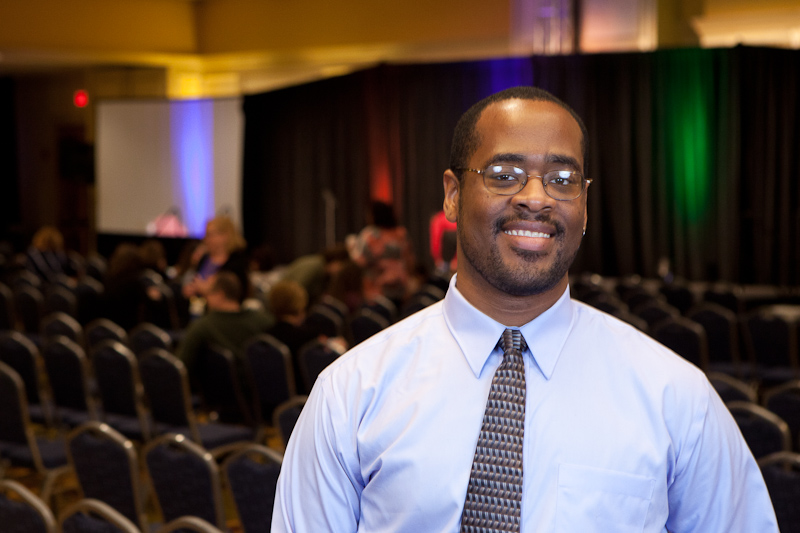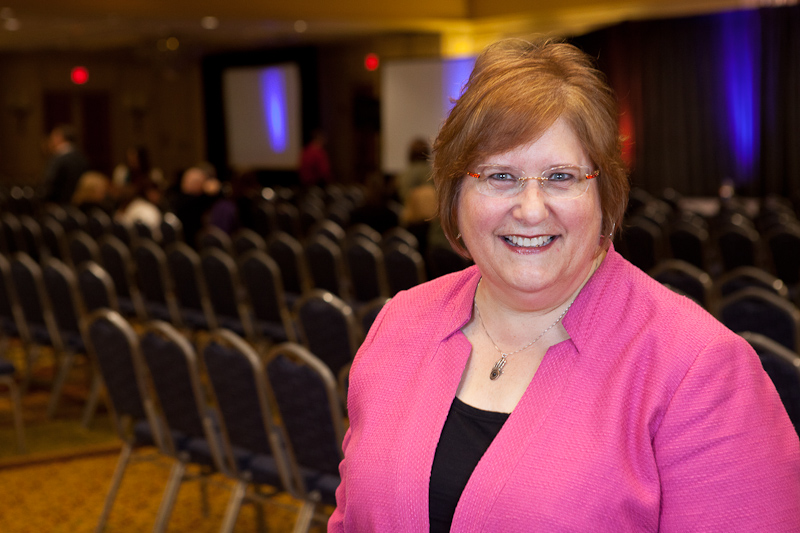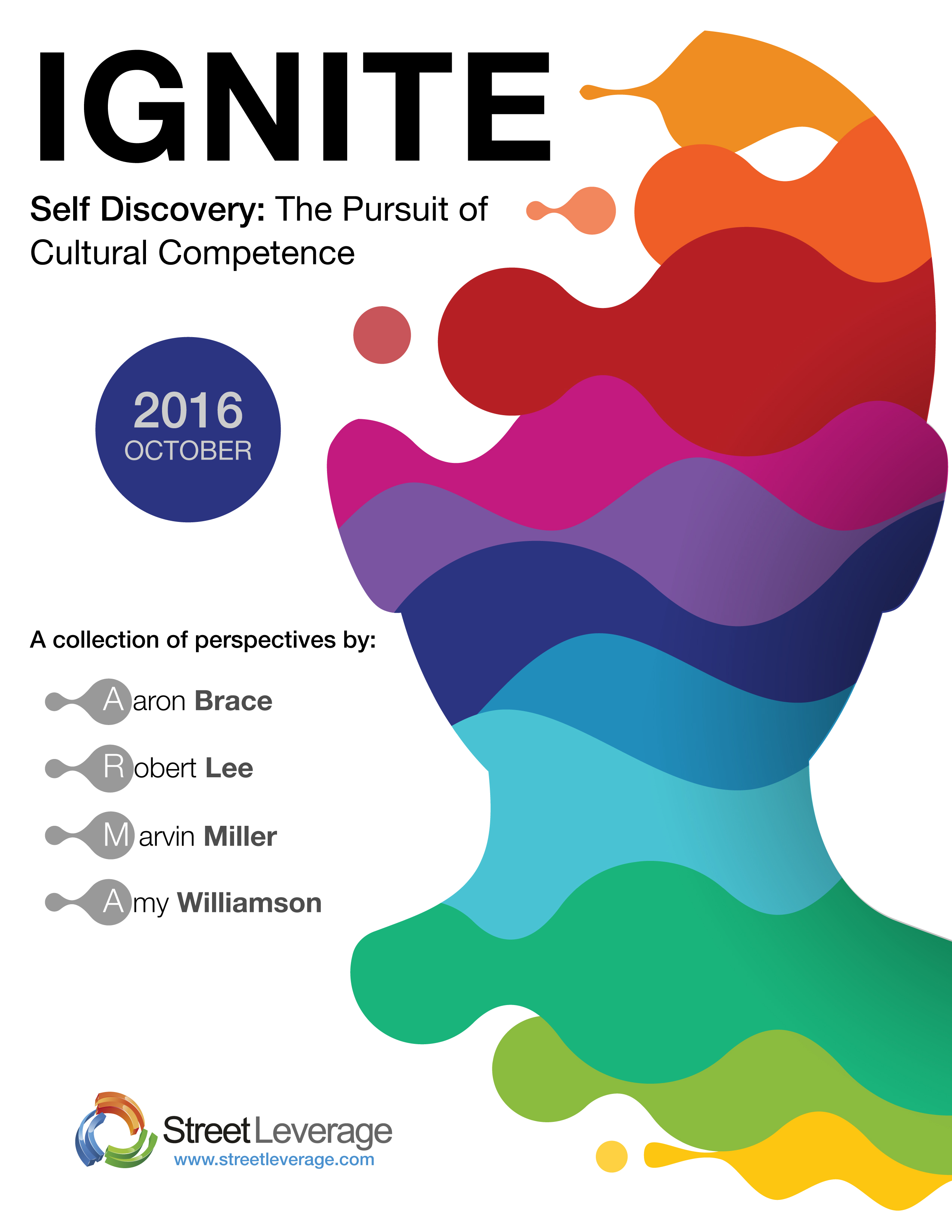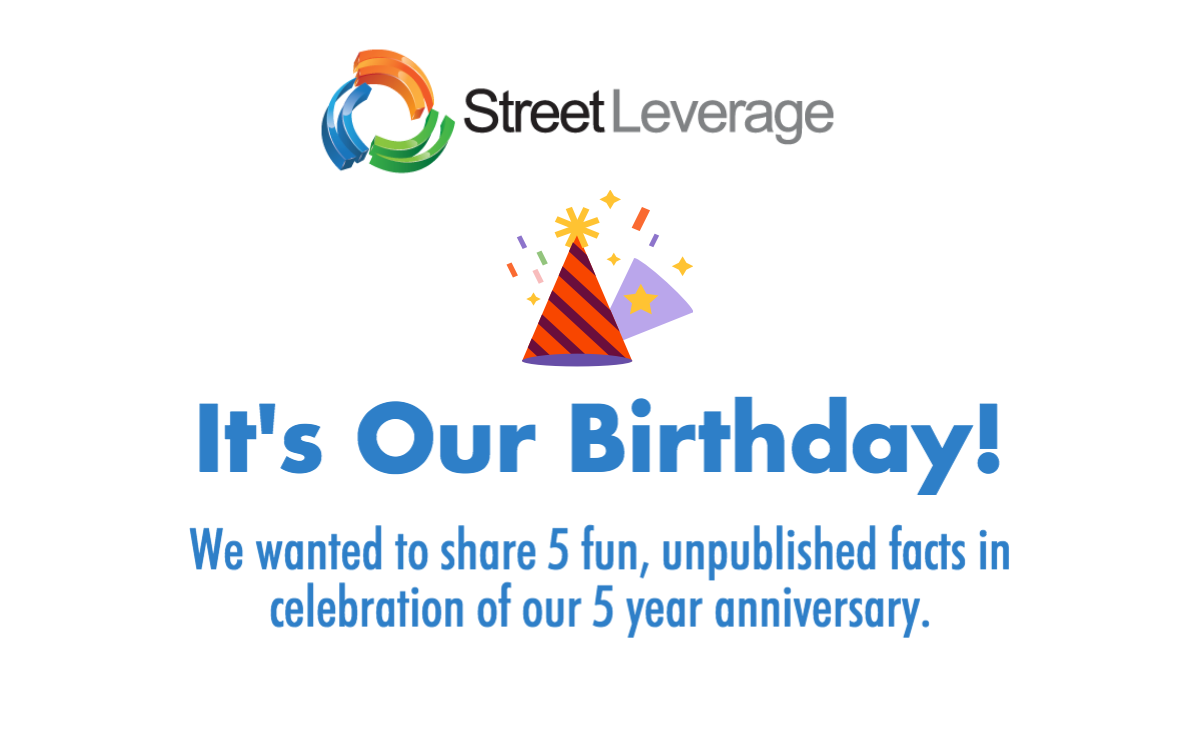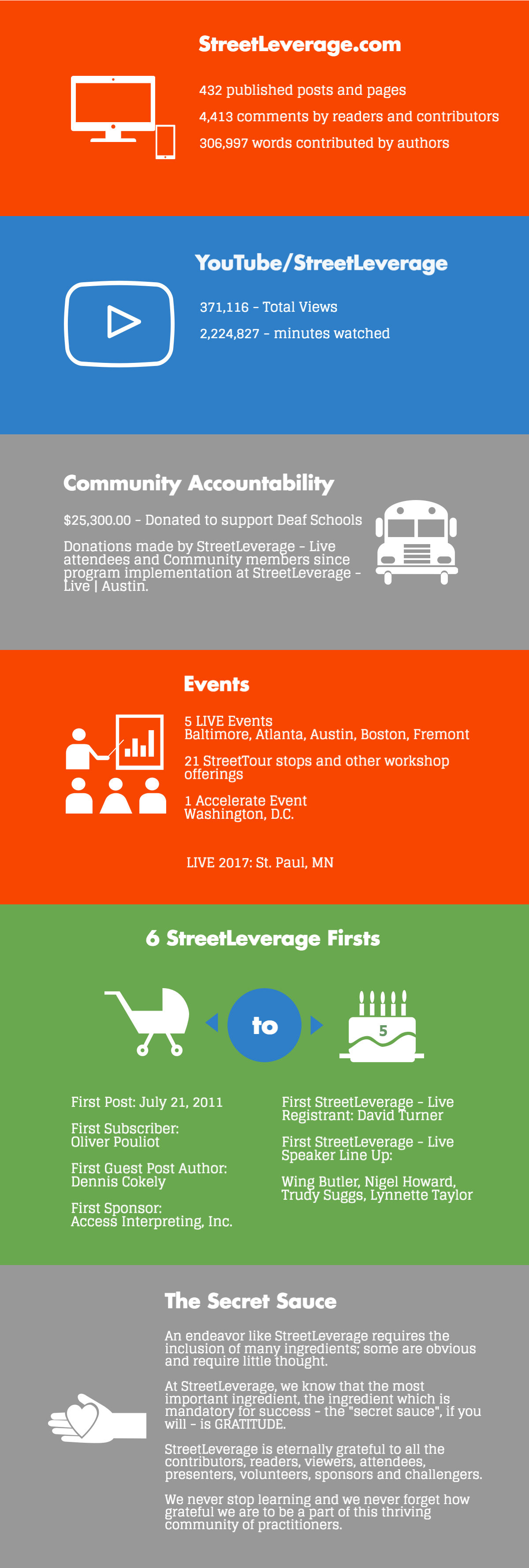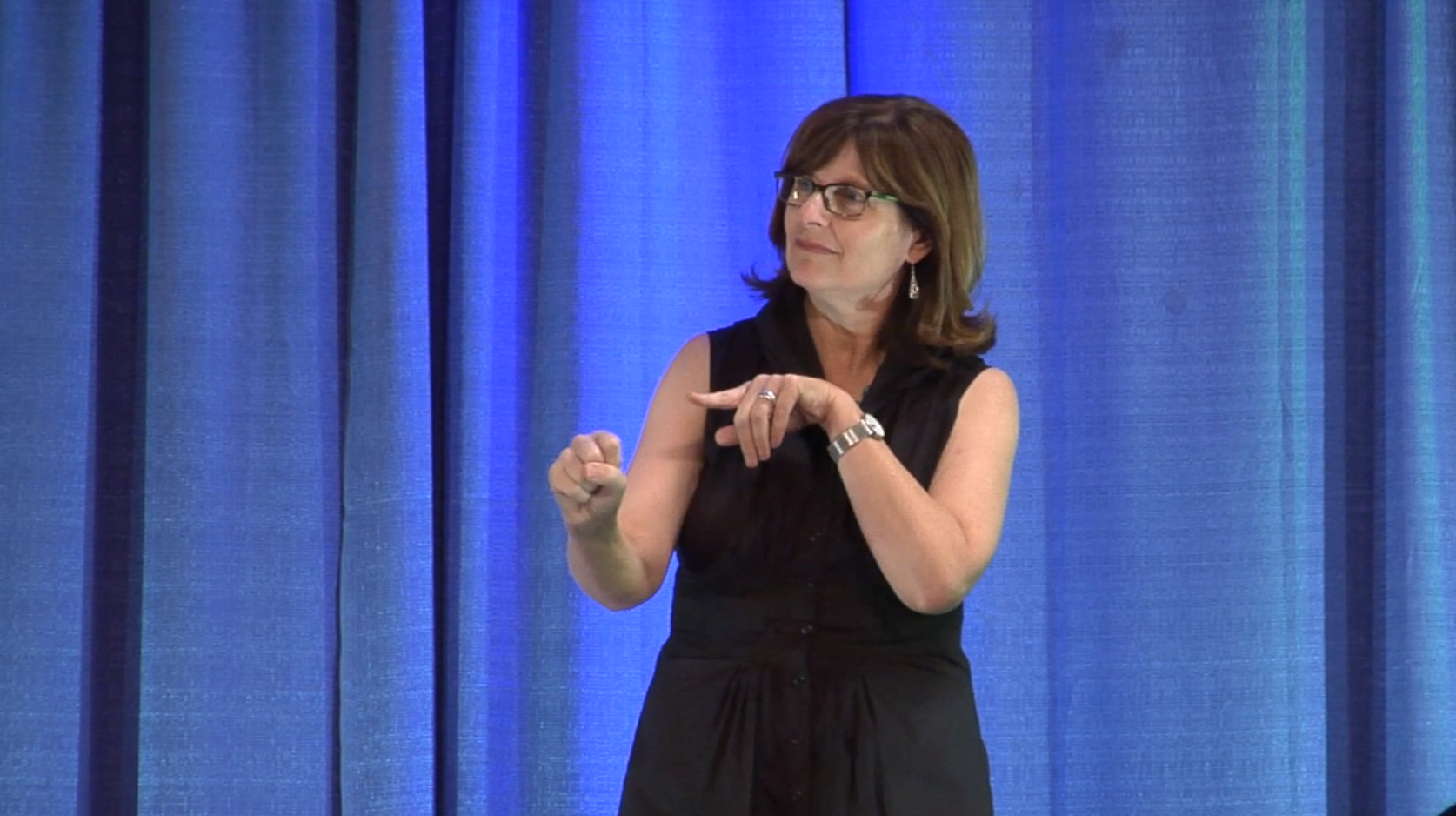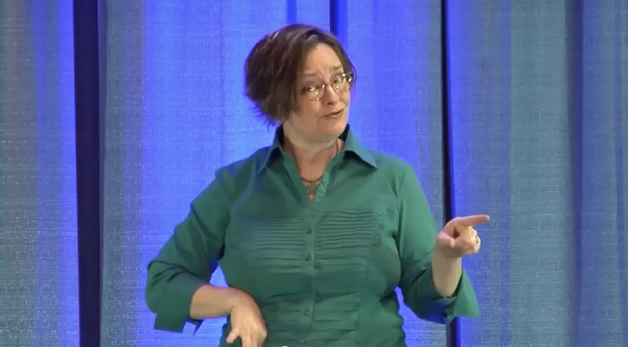
Traditional models of sign language interpreter referral are going head-to-head with technology as the digital realm’s innovation and sophistication foster the creation of out-of-the-box solutions for providing access. Read this case-in-point.
Are sign language interpreters ready to challenge their own ideas about “standard practices”?
Just as VRS and VRI redefined the field of signed language interpretation, coming technologies have the potential to change the trajectory of work in the field. Could alternative methods for finding, assigning, billing for and paying sign language interpreters mean more choices for consumers, practitioners and requestors?
We can already look to CSD’s Vineya, Linguabee, and now, Stratus’ InPerson app, for examples that we are standing on the precipice of evolutionary events in our field. What are the benefits? Are there downsides to exploring new ways to solve old problems? Traditional standards for vetting sign language interpreters, matching them with assignments, teaming, billing and other established methods in sign language interpreter referral seem to be next in the lineup for radical change. Eschew or embrace it – change is coming.
[Click to view post in ASL]
Is Geolocation the New Name of the Game?
On February 26, 2016, HealthCareIT News posted “Stratus Video to Debut Uber-like app for interpreters at HIMSS16.” According to Stratus Video insiders, the article regarding the release of their InPerson app was a bit premature. The article’s publication, however, prompted Brandon Arthur, founder of StreetLeverage.com, to reach out to Stratus Video for an interview about the app, their strategy for moving forward, and their thoughts on a variety of questions many sign language interpreters posed as they learned about the app’s official release. In a telephone interview, Brandon spoke with Kathryn Jackson, Vice President of Language Operations, joined by Tom Thompson, Executive Director of Stratus InPerson, and Kate Pascucci, Director of Marketing.
Stratus Video has been in the process of developing their InPerson app in response to growing evidence that while VRI (video remote interpreting) can be beneficial in many situations, it is not always the best fit for patients, hospital personnel, or interpreters using signed and/or spoken languages. While they recognize that the avenues used to provide interpreters can be important and impact the success or failure of a given interaction, Stratus believes that “even though the products are exciting, we know we are really providing interpreting services.”
Initially slated to roll out to hospitals and courts, Stratus’ InPerson app is designed as an added support for current, on-demand interpreting services provided via video. Leveraging technology to create a new model for interpreting may reduce costs for medical and other facilities while maintaining market rates of pay for interpreters, according to Tom Thompson.
Stratus believes that by considering the needs of all parties – the patient/consumer of interpreting services, the interpreter, and the requesting entity – the InPerson app, combined with Stratus video services can be a win-win-win. Over the last two years, Stratus met with groups of interpreters and administrators to ensure they were getting the big picture. A successful release of the app could signify a radical change for sign language interpreters in a marketplace that has already been impacted by video technology and other technological advances.
How Does the Stratus InPerson App Work?
Onboarding Interpreters
For interpreting professionals, downloading the app from the Apple iTunes Store or Google Play is free. The first screen allows practitioners to “Register as an Interpreter” and requires interpreters to answer a variety of questions to provide specific information which will be used to determine assignment offerings based on the needs and requirements of the requestor. Once the interpreter’s information is entered, a Stratus team member will contact them to verify the validity of credentials, skill sets, experience, education, etc. When an interpreter is vetted and approved, they will be entered into the network as an independent contractor and can begin accepting assignments sent to them via the app.
Requesting Interpreters
On the provider side, the facility can put out a request for an interpreter via the InPerson app, as well. After determining the language need, the facility provides the time(s) needed, the specific location within the facility, rate(s) of pay, special instructions, and other pertinent information so that the job can be broadcast out to interpreters who meet the criteria for the job. Requestors also have the ability to create groupings based on the practitioner pools they have. If there are preferred interpreters, staff interpreters or interpreters with specialized skill sets, the requests can be filtered accordingly.
Accepting Assignments
Once an interpreter is accepted into the network, they will be able to accept jobs which are broadcast out to them based on the different sets of criteria created by the practitioner and/or the requesting agency. Job assignments are made on a “first come, first serve” basis. If an interpreter meets the criteria and they are available, the rate is appropriate, etc., they can click on “Accept This Job.”
After the interpreter accepts the job, they receive the details and the facility is notified that the job has been assigned, and to whom. The interpreter’s profile will be provided to the facility – they can see a photo of the interpreter so that when they show up, the team knows what the interpreter looks like and has an idea of their level of experience and credentials. The photo also assists when the interpreter arrives so that assigned team members can identify them right away and escort them to the assignment.
Notably, the InPerson App does not include patient/client information due to HIPAA rules and other privacy concerns. Thompson stated, “In terms of the platform itself, there is no patient data that comes across our platform…you are never going to find their name or room number, or any information about a patient anywhere in the system.” Interpreters can accept an assignment and then request additional information directly from the requesting entity. If upon further investigation, the interpreter feels they will not be a good match for the job, they can notify the requestor at that time.
Credentialing and Issue Resolution
While Stratus doesn’t have established credentialing requirements, they do follow the requirements of the facilities who utilize their services. Once a facility signs on, Stratus will onboard interpreters based on adherence to client needs. In terms of quality assurance, Thompson emphasized that there is a review process for both the interpreter and the facility which Stratus will oversee on their end. By allowing for a review process, issues can be managed quickly to ensure happy providers and practitioners. In the course of the interview, there was no specific mention of a review process for consumers.
In addition to the review process following each completed assignment, there is an option on the app to “Open an Issue,” which is a more serious type of monitoring. Both sides can open an issue which allows for investigation and pro-active work to resolve problems before they worsen. An issue, according to Stratus, is usually considered a more serious professional issue – the interpreter does not meet the qualifications for the assignment, the interpreter is late or unprofessional, etc. While not stated in the interview, this may be one avenue for consumer input regarding various interpreters.
Billing and Payment
According to Thompson, Stratus recognizes that each location is different in terms of interpreter rates. Bearing that in mind, Stratus doesn’t set the rates, rather they investigate the market and make recommendations to facilities who are signing on to use their service. Thompson was quick to dismiss Uber comparisons by pointing out that Stratus is not looking for a race to the bottom; instead, they are looking to open markets up for interpreters, hospitals, and courtrooms and for those in need of interpreting services, stating, “We have to make sure that it works for everybody, or it’s not going to work.”
Reportedly, interpreters have responded favorably to the idea that Stratus jobs are paid regularly in two-week intervals whether the requesting entity has paid Stratus for services or not. This kind of revenue stability is attractive to interpreters who often work with variable payment schedules and have to spend much of their time chasing revenue.
Questions Linger
Whether you are an early adopter or reluctant latecomer, the technology this new app represents and the marketing strategies explored are, without a doubt, the wave of the future in many industries. For a high-touch, high context, specialized field like sign language interpreting where tradition and change go head-to-head on a regular basis, it is imperative that we explore all angles. Could one of these new technologies lead to better solutions? Questions linger regarding long-standing, hard-won standards of practice, ownership of quality standards, interpreter/consumer matches, inclusion of the linguistic minority cultures served, the use of CDIs, the “first come, first hired” methodology, etc.
Here are some of the most common questions/concerns posed when the Stratus InPerson App press release first came out. Most are not specific to the particular company/app but address the more global issues sign language interpreter referral has been facing for some time.
Confidentiality
As one of the most fundamental, foundational values of the Deaf and interpreting communities, confidentiality is always one of the most critical concepts to address.
As previously mentioned, the InPerson app does not provide patient/client information as one of the ways Stratus can protect the privacy and confidentiality demands from medical and legal entities. Contractors and staff alike are asked to agree to confidentiality standards and are expected to adhere to them. As in traditional coordination, there is a level of inherent trust that interpreters will uphold the ethical standards of the field with avenues to pursue action should there be a need.
Quality Standards
Coordinating sign language interpreters is challenging under the most perfect of circumstances. One possible downside of the model Stratus is using may be in the “first come, first hired” methodology. If requesting entities are determining skill sets/required credentials, who’s to say that the “race to the bottom” isn’t just happening along a different road? This is one of the most common complaints lobbied at spoken language agencies who provide sign language interpreters. The interpreter is still self-identifying that they are qualified for the jobs they take and according to Stratus executives, the hiring entity is determining the quality and caliber of the interpreter hired for each assignment. On the other hand, Stratus InPerson App does allow requesters to select pools of interpreters. If those within the organization understand what they are looking for relative to interpreter quality, this can support and possibly enhance the quality of services currently being provided to consumers through direct contracts or more traditional interpreter referral agencies, particularly where schedulers do not know the interpreters personally.
Meeting Consumer Needs – Cultural, Linguistic, and Other
Another potential sticking point in placing sign language interpreters via an app lies in the lack of consumer information provided, particularly when focused on the medical, mental health and legal systems. These arenas are some of the most high-stakes interpreting possible with potentially life-altering results. Deaf and hard of hearing consumers are already faced with unknown interpreters, lack of practitioner continuity and poor matching based on availability and poor quality control. Coordination by app does not seem to resolve any of these issues, nor does it exacerbate them as this is currently one of the many Everests interpreter coordinators face on a daily basis.
According to the interview, Stratus interpreters who use the InPerson app would be able to do some follow up with the hiring entity to ensure good matches are made and no conflicts of interest arise, however, those same opportunities exist now and are not always utilized. If the requestor does not know the patient/consumer history with an interpreter or the skills needed to interpret accurately and effectively in a specific arena, they may not be able to answer questions if the interpreter asks them.
One question interpreters posted online after reading the initial press release was, “How can the Deaf or Hard of Hearing individual participate in the hiring of the interpreter? Is there an avenue for that?” No mention was made of this path in our interview with Stratus. If consumer preferences could be captured, how would that work? What would it have to look like for buy-in from the Deaf and Interpreting communities?
Teaming/Use of CDIs
When questioned about the use of teaming or the utilization of CDIs when needed, Stratus representatives were supportive of the professional decision-making of the interpreter. Kathryn Jackson stated, “They can, and should, share their professional opinions with the administrators, and make those requests. And certainly we’ve always supported that – the idea of teaming, the idea of getting CDIs…for the interpreter to do their most effective work.” Again, this is not that different from current standards in jobs which are booked for under one hour. If interpreters find themselves in circumstances where they need a team or the expertise of a CDI, they must advocate for that in the moment, which may or may not happen, and may or may not be successful.
Standards for Pay
Stratus reports that they will go into a market to research current pay rates for interpreters as opposed to researching agency mark-ups which might allow for undercutting. Once a recommended standard rate of pay is determined, this is communicated to the hiring entities to maximize fill rates. Basically, Stratus does the homework to find out what rates interpreters will accept for specific types of work and then transparently charges an administrative fee of $15/hour to facilitate the assignment of interpreters via the app. In theory, the volume of work increases, the middle man (agency) is eliminated thus resulting in lower rates for the requestors, more work for the interpreters and a steady stream of income for Stratus.
While the plan outlined by Stratus makes sense on paper, how does it really work if an entity decides to pay something other than the recommended rate? Obviously, fill rates are on the minds of coordinators, but what happens to the consumer if the hourly rate paid to interpreters is the highest priority? What are the mechanisms that would prevent a vendor from going for the lowest rate as a matter of course?
An additional concern is the vastness of the task. The amount of work required to act as an insider in every market is exhaustive and requires feet on the ground talking to interpreters, hospitals, and other contracting entities. While this methodology sounds like it could have some positive outcomes, how long will it last? If those involved in the process of information-gathering are spread too thin, will their work to facilitate an average rate remain on point? If this model of business becomes unsustainable, what comes next?
Calling All Stakeholders: Dialogue is Key
Our interview with Stratus Video provided valuable insight into their process and perspectives on finding alternatives to traditional interpreter referral and the increasingly utilized VRI solution. Their app works to bridge the gap between the two in the face of evidence that one size does not fit all. Stratus’ research on market needs, local sign language interpreter rates and the leveraging of geolocation technology all point towards new horizons in the business of sign language interpreter provision. While technology like Stratus’ InPerson app challenges our views on vetting, contracting, billing, and other aspects of service provision, it also creates opportunities for dialogue. As Jackson sagely stated, “Anytime there’s something new, there is always going to be a bit of fear, and it’s okay…I think it’s healthy to always have debate; I think it’s healthy to challenge ourselves, and it’s always good to get together in a room and talk about stuff.”
To be sure, the explosion of technology in the last decade has altered the course of both the practice and the business of sign language interpreting. Whether one eschews or embraces it, this redefinition brings an opportunity for stakeholders to come to the table and consider the impact of new technologies and methodologies on the work sign language interpreters do in support of the Deaf Community.
Questions for consideration:
- How does “referral by app” impact patients and practitioners? Are there hidden human or financial costs/benefits?
- Can this type of technology support traditional interpreter provision? Are there ways to combine traditional referral techniques with apps which enhance speed and may lower costs?
- How can practitioners, consumers, and vendors work together to ensure that these types of technological advances explore all perspectives and possibilities?



